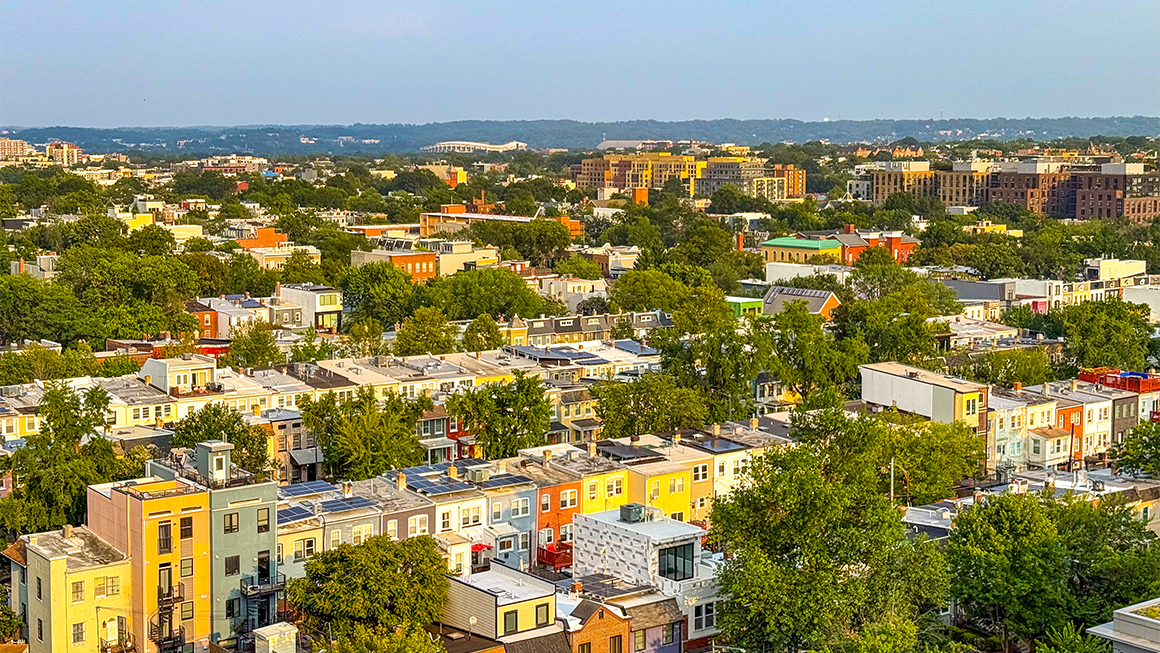
On September 17, the DC Council passed one of the most significant pieces of housing legislation in recent history: the Rebalancing Expectations for Neighbors, Tenants, and Landlords (RENTAL) Act of 2025.
Among other changes, the RENTAL Act modifies DC’s Tenant Opportunity to Purchase Act (TOPA) law. TOPA gives tenants the right to make a competing offer to purchase a rental property, or to assign that right to a developer, when their building goes up for sale. It has helped develop and preserve thousands of affordable units. Among several changes to TOPA, the RENTAL Act addresses concerns that TOPA creates excessive administrative burdens and unnecessarily adds to the time and cost of building and redeveloping rental housing by exempting new multifamily housing from TOPA requirements for the first 15 years.
Although it has not been signed into law yet, the DC Council is already considering amendments to the new law that would affect two-to-four-unit rental properties, including creating a streamlined TOPA process or exempting some from TOPA entirely.
To make the most-effective decisions, DC policymakers need a clear picture of the District’s two-to-four-unit rental housing landscape. Here are five facts about this housing stock, including implications of possible TOPA changes.
- Properties with two to four units make up two-thirds of all multifamily rental properties in the District
According to real property records, the District has 6,886 two-to-four-unit rental properties, compared with 3,568 properties with five or more units. Because of their smaller size, two-to-four-unit buildings make up 11 percent of all apartments in multiunit properties. - Most properties with two to four units are in Wards 5, 6, and 7
Ward 5 has the most two-to-four-unit rental properties (1,407, or 21 percent), followed by Ward 6 and Ward 7. Ward 3 and Ward 4 had the fewest two-to-four-unit properties. The share of two-to-four-unit buildings among all multiunit rental properties ranged from 51 percent in Ward 3 to 79 percent in Ward 5. The neighborhoods with the most two-to-four-unit properties include Capitol Hill, Lincoln Park, Stanton Park, and Kingman Park.
- Most properties with two-to-four units are owned by individuals
More than three-quarters (77 percent) of two-to-four-unit rental properties are owned by individuals, including 41 percent that are owner-occupied (if the owner’s property tax mailing address is the property). Taxable corporations, partnerships, and associations own 20 percent of two-to-four-unit buildings, while all other types of owners collectively own just 3 percent.
- Just 2 percent of two-to-four-unit properties are assisted housing, meaning almost all housing in two-to-four-unit properties has no formal restrictions on affordability
A very small number of two-to-four-unit properties are in assisted housing programs, such as federal project-based subsidies, the low-income housing tax credit, or DC’s Housing Production Trust Fund. Because most two-to-four-unit properties are older (84 percent were built before 1980 and 67 percent before 1950), even if they are unassisted, they likely have comparatively lower rents than newer, larger buildings. - Buildings with two to four units make up most multifamily rental properties involved in the TOPA process
When a rental property is to be sold, the owner must file an offer of sale notice with the DC Department of Housing and Community Development. Copies of this notice must also be provided to the tenants living in the building, which gives them the opportunity to organize and assert their TOPA rights, if they choose to. From 2015 to 2020, between 245 and 329 TOPA notices of sale were filed annually for two-to-four-unit buildings. In all years, this was more notices than were filed for buildings with five or more units, which were between 140 and 275 notices annually.
The implications of proposed changes to TOPA
Two specific proposals for two-to-four-unit buildings are among those the DC Council may consider. Exempting these properties from TOPA could protect smaller landlords’ assets and wealth. At the same time, these properties may provide valuable affordable housing that TOPA can help preserve.
- Proposal (PDF): Exempt two-to-four-unit properties from TOPA requirements if they are owned by an individual or in a living trust, unless they own more than two properties.
The 5,329 two-to-four-unit properties owned by individuals include 670 named as trusts. Of these, 4,680 belong to owners with two buildings or fewer and would be exempt from TOPA under this proposal, leaving 2,206 properties for which TOPA would still apply. - Proposal (PDF): Exempt all two-to-four-unit rental properties from TOPA unless they are “owned in majority by a business corporation.”
This proposal would exempt most two-to-four-unit buildings from TOPA except some of the 1,373 two-to-four-unit rental properties owned by either taxable or nontaxable corporations, partnerships, and associations.
If the small number of properties owned by nontaxable entities (28) were excluded from the exemption, that would leave up to 1,345 two-to-four-unit properties subject to TOPA. Of these, 1,152 are registered as limited liability companies.
More data are needed to understand the implications of TOPA changes
TOPA is one of the District’s important tools for preserving affordability and giving tenants a say in development of the buildings where they live.
Though these data can give some insight into proposed TOPA changes, we lack crucial data on TOPA outcomes for these properties—such as how many were purchased by tenants or remained affordable. One of the provisions in the RENTAL Act hopes to address this gap by creating a database to track TOPA outcomes.
Until more data are available, the DC government should consider existing data as they weigh potential changes to TOPA that could affect thousands of DC tenants and property owners.
Let’s build a future where everyone, everywhere has the opportunity and power to thrive
Urban is more determined than ever to partner with changemakers to unlock opportunities that give people across the country a fair shot at reaching their fullest potential. Invest in Urban to power this type of work.